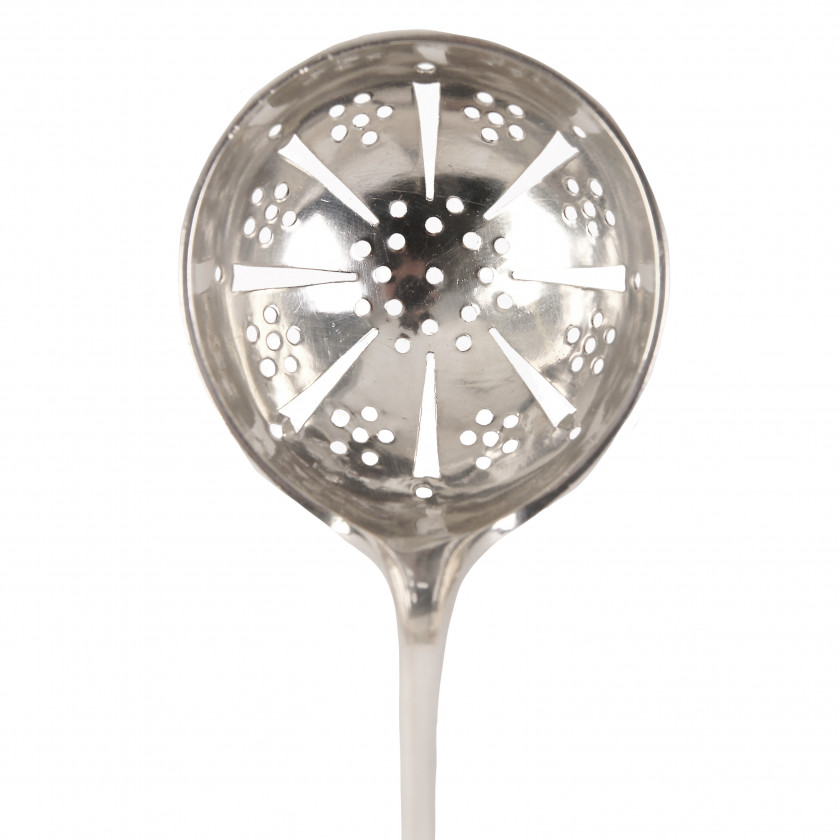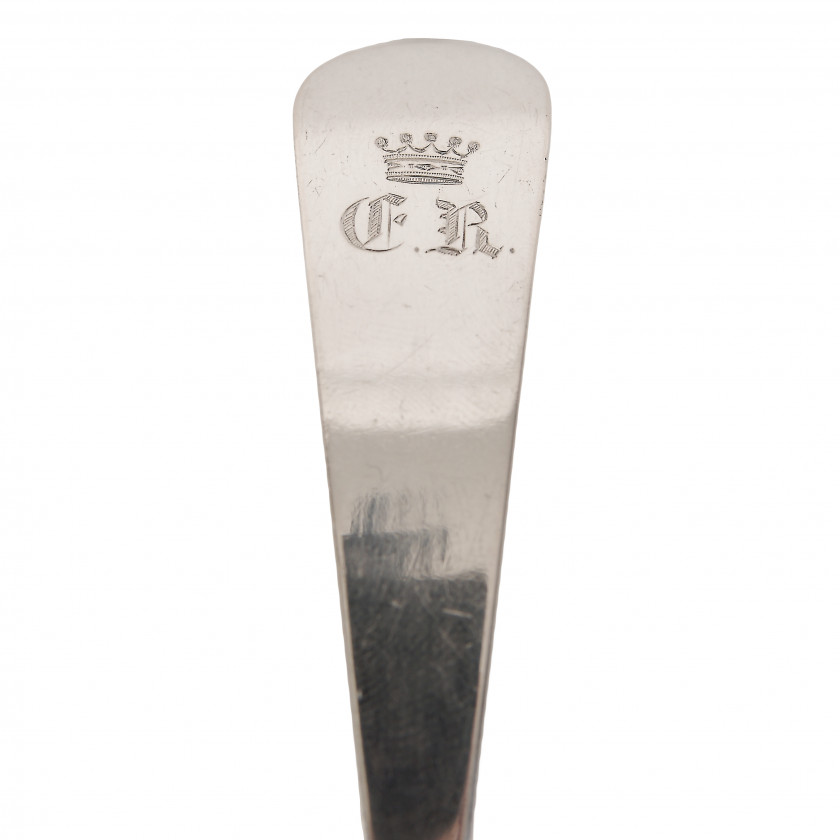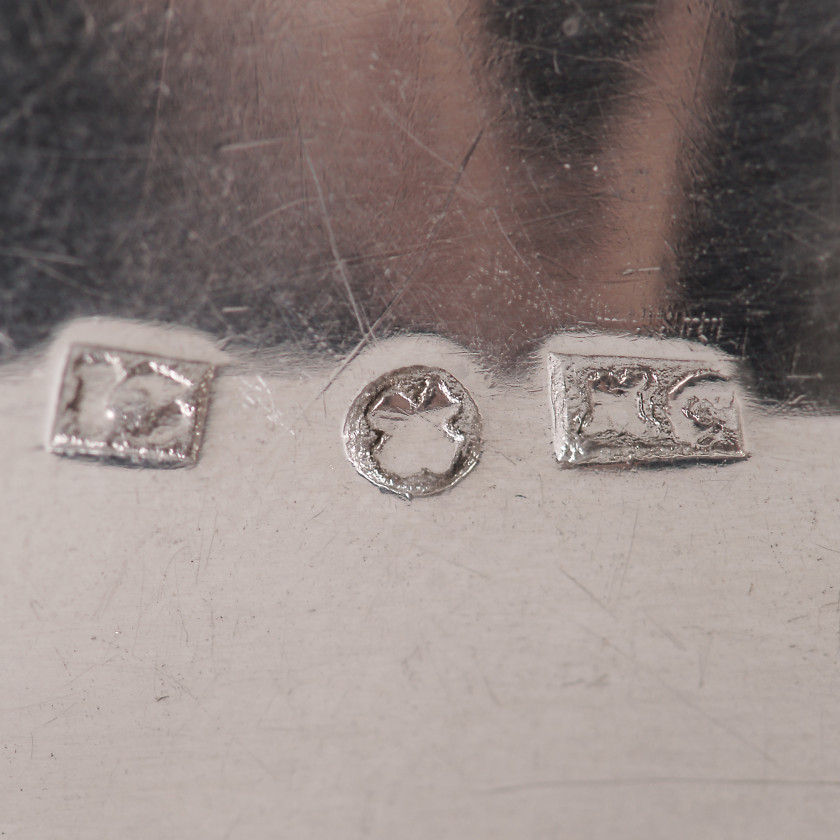Silver serving spoon
-
Item has been sold
Artist/Maker: Clements Hermann Georg (HC)
Artist/Maker Dates: 1781 - 1856
Place of Production: Estonia (Russian Empire), Tallinn (Reval)
Date of Production: 1829 - 1842
Materials: silver 13 loth (813*)
Weight: 54 gr.
Width: 19.0 cm.
Condition:
Condition notes: Wear consistent with age and use
Description
The maker’s mark ‘HC’ is the mark for Hermann Georg Clemens, the Greek cross is the old city mark for Reval and 13 indicates the fineness of 13 Lot, or 0.812.5 (812.5/1000) silver content.
Hermann Georg Clemens was the son of the silversmith Carl Friedrich Clemens (also Clements) and was born in Reval on 14th January 1781. He was apprenticed to J. J. Krusemann in Riga and became a Master on 4th October 1806. After the death of his father in 1793 his mother had taken over the workshop and he had presided over it. After the death of his mother in January 1806 he inherited the workshop in his own right. He became a Burgess of Reval on 7th May 1807 and a Brother of the Guild of Silversmiths in the same year. He was an Alderman of the Guild between 1818 and 1843. Having successfully passed the required examinations in Saint Petersburg he became on 26th April 1843 the first Assay Master in the recently established Assay Office for the Government of Estonia, remaining in office until 19th January 1846. Hermann Georg Clemens died on 19th October 1856.
The maker’s mark ‘HC’ shown on the spoon is his second mark. He had initially taken over one of his father’s maker’s marks, ‘CLEMENZ’, before depositing his own. He had also another maker’s mark, ‘HC’ in script letters, and finally his initials appear in Cyrillic letters in his mark during his time in office as Assay Master, ‘Г.К’.
The spoon is marked in the traditional way for all Baltic cities and towns from the beginning in the 13th or 14th century until the Imperial Russian Government introduced in the Baltic provinces around 1840 the form of marking that was to remain in use until late in the 19th century. The Greek cross was the city mark for Reval from the beginning and is derived from the city’s Minor Coat of Arms, a white cross in a red field, still used today. In the later marks the Greek cross was changed to three lions passant guardant from Reval’s Great Coat of Arms.
Shipping details
- Log in to see the cost for shipping this lot to your address.
Shipping methods are determined by item size, type, fragility and specific characteristics.
Shipping costs are calculated based on carrier rates, delivery distance and packing complexity.
Payment details
Doma Antikvariāts accepts the following payment methods:








